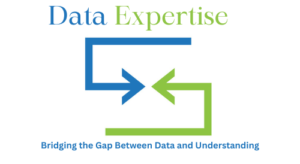Introduction
In an era dominated by information, industry leaders are harnessing data-driven innovation to redefine the boundaries of what’s possible in business. This blog delves into how top executives leverage data to catalyze change, drive growth, and create sustainable competitive advantages.
The Catalyst of Data-Driven Innovation
Data-Driven Innovation in Action: In the automotive sector, Tesla’s use of data to enhance vehicle performance and safety is a prime example. Their data-driven approach enables continuous improvement of vehicle software through over-the-air updates, illustrating how real-time data analysis can lead to groundbreaking advancements in product development and customer satisfaction.

- Understanding Data-Driven Innovation: It’s the strategic use of data to not only inform decisions but to predict trends, innovate offerings, and revolutionize industry practices.
- Impact Across Industries: For instance, in retail, companies like Amazon use data to personalize customer experiences, while in healthcare, data-driven strategies are transforming patient care through predictive analytics.
Leaders’ Perspectives on Data-Driven Strategies
- Executive Insights: Leaders from various sectors share how data analytics shapes their strategic decisions, citing examples like Netflix’s use of viewer data to influence content production and distribution.
- Case Studies: Look at how Tesla integrates data from its vehicles to continuously improve performance and safety features through over-the-air updates.
Transforming Challenges into Opportunities
Innovative Problem-Solving: Industry leaders are tackling the issue of data quality and accessibility head-on, transforming these challenges into catalysts for innovation. For example, Netflix employs sophisticated data algorithms to not only recommend content but also to decide which shows to produce, turning viewer preferences into actionable insights that drive their content strategy.

Strategic Data Utilization: In the financial sector, firms like JPMorgan Chase harness data analytics to detect fraudulent activities and assess risk, demonstrating how data-driven strategies can provide a significant competitive edge. By converting data challenges into strategic opportunities, these companies set new industry standards and deliver enhanced customer experiences.
- Addressing Data Challenges: Leaders discuss turning data silos and integration hurdles into opportunities for innovation, as seen with companies like Salesforce, which uses customer data to enhance user experience and service offerings.
- Competitive Advantage: Data-driven insights allow businesses like Spotify to recommend personalized playlists, creating a unique value proposition.
The Future of Data-Driven Innovation
- Predictions from Leaders: Visionaries predict the increasing role of AI and machine learning in data analytics, suggesting a future where data not only informs but also autonomously drives business strategies.
- Sustaining Innovation: Continuous learning and adaptation are key, as demonstrated by Google’s constant evolution of its search algorithms based on data analysis.
The horizon of data-driven innovation is expanding rapidly, with industry leaders forecasting a future where data not only informs decisions but also autonomously drives business processes. As artificial intelligence and machine learning evolve, the integration of these technologies with big data is expected to unlock unprecedented levels of efficiency and new business models.
Moreover, the democratization of data analytics is anticipated to empower more stakeholders across organizations, regardless of their technical expertise. This shift will likely lead to a more inclusive approach to innovation, where diverse perspectives contribute to data-driven strategies. As a result, businesses that can effectively harness the power of data analytics while ensuring ethical standards and transparency are poised to lead their industries in innovation, customer satisfaction, and sustainable growth.
Building a Data-Driven Innovation Culture
Cultivating a data-driven culture is pivotal for organizations aiming to thrive in the modern business landscape. It involves fostering an environment where data is at the forefront of every decision-making process, encouraging employees at all levels to engage with data analytics tools and insights.
- Leadership and Culture: The commitment to a data-centric culture starts at the top; for example, Microsoft’s CEO, Satya Nadella, emphasizes a culture where data is integral to every decision-making process.
- Empowering Teams: Encouraging data literacy and providing tools for data analysis at all levels of the organization can foster an environment of informed innovation.
Companies like Google exemplify this approach, where data is not just a resource but a core aspect of their identity, data-driven innovation, and strategic decisions. By embedding data into the organizational DNA, businesses can enhance agility, foster a culture of continuous learning and improvement, and ultimately, achieve a competitive edge in their respective fields.
Ethical Considerations in Data Use
- Data Ethics: Leaders highlight the importance of ethical data use, referencing how IBM prioritizes transparency and user consent in its data practices.
- Building Trust: Trust is paramount, as seen with Apple’s emphasis on user privacy and data security, which has become a core part of its brand identity.
Conclusion
Data-driven innovation is not just a trend but a fundamental shift in how businesses operate and compete. By embracing data, industry leaders are not only optimizing their current operations but are also paving the way for future breakthroughs and success.
This shift towards data-centric strategies signifies a transformative era where informed decision-making and predictive analytics become key drivers of business growth. Organizations that adeptly integrate data insights into their core strategies are setting new benchmarks in efficiency, customer engagement, and innovation, demonstrating that the future of business is unequivocally intertwined with the effective utilization of data.




